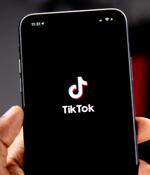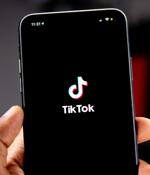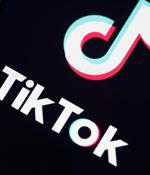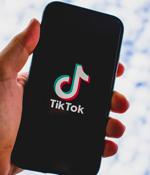Security News

Threat actors are capitalizing on a popular TikTok challenge to trick users into downloading information-stealing malware, according to new research from Checkmarx. "Instructions to get the 'unfilter' software deploy WASP stealer malware hiding inside malicious Python packages," Checkmarx researcher Guy Nachshon said in a Monday analysis.

Threat actors are capitalizing on a popular TikTok challenge to trick users into downloading information-stealing malware, according to new research from Checkmarx. The trend, called Invisible Challenge, involves applying a filter called Invisible Body that just leaves behind a silhouette of the person's body.

Hackers are capitalizing on a trending TikTok challenge named 'Invisible Challenge' to install malware on thousands of devices and steal their passwords, Discord accounts, and, potentially, cryptocurrency wallets. A new and trending TikTok challenge requires you to film yourself naked while using TikTok's "Invisible Body" filter, which removes the body from the video and replaces it with a blurry background.

The ByteDance-owned platform, which currently stores European user data in the U.S. and Singapore, said the revision is part of its ongoing data governance efforts to limit employee access to users in the region, minimize data flows outside of it, and store the information locally. "Based on a demonstrated need to do their job, subject to a series of robust security controls and approval protocols, and by way of methods that are recognised under the GDPR, we allow certain employees within our corporate group located in Brazil, Canada, China, Israel, Japan, Malaysia, Philippines, Singapore, South Korea, and the U.S. remote access to TikTok European user data," the company said.
![S3 Ep99: TikTok “attack” – was there a data breach, or not? [Audio + Text]](/static/build/img/news/s3-ep99-tiktok-attack-was-there-a-data-breach-or-not-audio-text-small.jpg)
DUCK. I'm doing very, very well, thank you, Douglas! A messy thing that is bugging people is the question of this TikTok thing.

The denial follows alleged reports of a hack that surfaced on the Breach Forums message board on September 3, with the threat actor noting that the server holds 2.05 billion records in a humongous 790GB database. "Who would have thought that TikTok would decide to store all their internal backend source code on one Alibaba Cloud instance using a trashy password?," the hacking group known as BlueHornet tweeted over the weekend.

TikTok denies recent claims it was breached, and source code and user data were stolen, telling BleepingComputer that data posted to a hacking forum is "Completely unrelated" to the company. The user shared screenshots of an alleged database belonging to the companies, which they say was accessed on an Alibaba cloud instance containing data for both TikTok and WeChat users.

TikTok denies recent claims it was breached, and source code and user data were stolen, telling BleepingComputer that data posted to a hacking forum is "Completely unrelated" to the company. The user shared screenshots of an alleged database belonging to the companies, which they say was accessed on an Alibaba cloud instance containing data for both TikTok and WeChat users.

"Attackers could have leveraged the vulnerability to hijack an account without users' awareness if a targeted user simply clicked a specially crafted link," Dimitrios Valsamaras of the Microsoft 365 Defender Research Team said in a write-up. Successful exploitation of the flaw could have permitted malicious actors to access and modify users' TikTok profiles and sensitive information, leading to the unauthorized exposure of private videos.

Microsoft found and reported a high severity flaw in the TikTok Android app in February that allowed attackers to "Quickly and quietly" take over accounts with one click by tricking targets into clicking a specially crafted malicious link."Attackers could have leveraged the vulnerability to hijack an account without users' awareness if a targeted user simply clicked a specially crafted link," Microsoft 365 Defender Research Team's Dimitrios Valsamaras said.